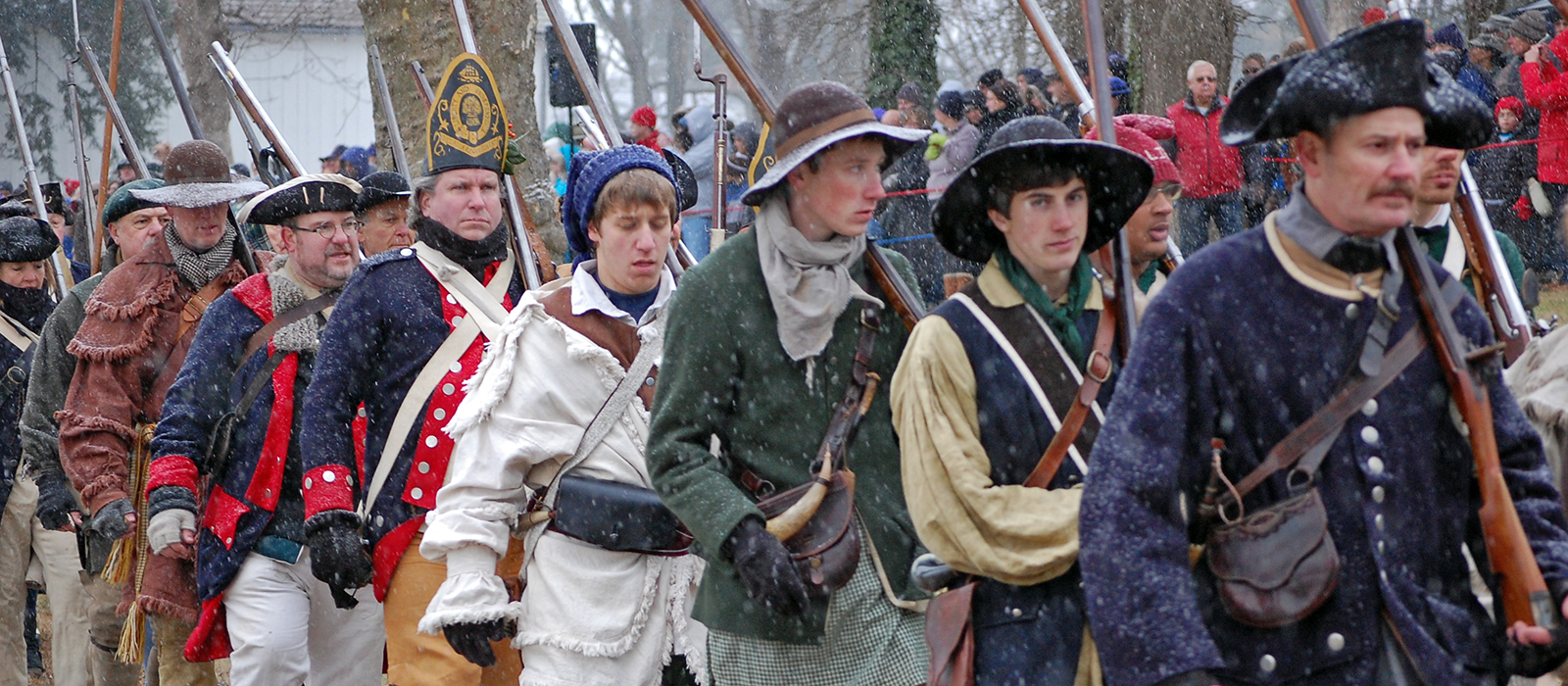
If you’ve ever attended the First Crossing or Christmas Day Crossing reenactments at Washington Crossing Historic Park, you might have noticed something: the soldiers aren’t wearing the same uniform.
In fact, the clothing worn by the Continental Army progressed greatly throughout the Revolutionary War. In the early days of the Revolution, militiamen wore civilian clothes. It wasn’t until 1779 that Congress adopted a standardized military uniform.
“At the time of the crossing in 1776, soldiers’ uniforms were provided by individual state governments to their troops,” says John Godzieba, president of the Friends of Washington Crossing Park and the reenactor who portrays General Washington. “At the crossing reenactment, you’ll see some participants are members of regular reenactment units, and they wear the prescribed uniform of their unit. Others wear the standard Continental Army uniform.”
Despite much variation between different units, some clothing staples would have been part of any uniform. Here’s an overview of the clothing a typical soldier would have worn during the Revolutionary War.
Hats
During the colonial period, hats were commonplace for both men and women. Tricorn as well as cocked hats – folded and pinned on one or multiple sides – were worn by many soldiers in the Continental Army. Officers added a colored decoration to their hat known as a cockade, which was used to identify rank. In the colder months, cloth or wool caps were used to keep warm.
Shirts
Unless they were used as a nightshirt for sleeping, shirts were almost always worn underneath a coat or waistcoat. They were loose-fitting and reached the mid-thigh or knee.
Shortly after George Washington took command in 1775, he expressed his favor for hunting shirts and ordered the militias to adopt them as an early uniform. These linen shirts had a collar of fringe around top. Washington touted their versatility and believed they were the sign of a distinguished marksman. Neck coverings or simple neckerchiefs were also worn by men.
Coats
Over their shirts, soldiers would wear a vest-like waistcoat and a wool regimental coat. These outer coats could be dark blue, brown, or green with contrasting lapels and cuffs, called “facings.” Colors distinguished everything from state to rank to the unit a soldier belonged to. Even after the standard Continental Army uniform was adopted – blue coats with red facings – variations remained among units and rankings.
Breeches
The equivalent of modern-day pants, breeches were tight-fitted around the leg and looser at the top. This allowed for easier movement while traveling or in battle.
Shoes
While shoes may seem like a necessity for soldiers, some units were left barefoot going into the Christmas Day Crossing and the harsh winter of 1777-1778 until the government was able to supply them with proper footwear.
When they had them, men wore buckled shoes that were often affixed with gaiters: a canvas or leather covering worn over the ankles that kept out dirt and water. In order to travel through heavy snow and ice, cleats known as ice creepers could be attached to shoes with a leather strap.
Longstockings made of wool or linen were worn by the average soldier all year round. Lacking the elastic used in today’s socks, they were held up with a garter or string.

